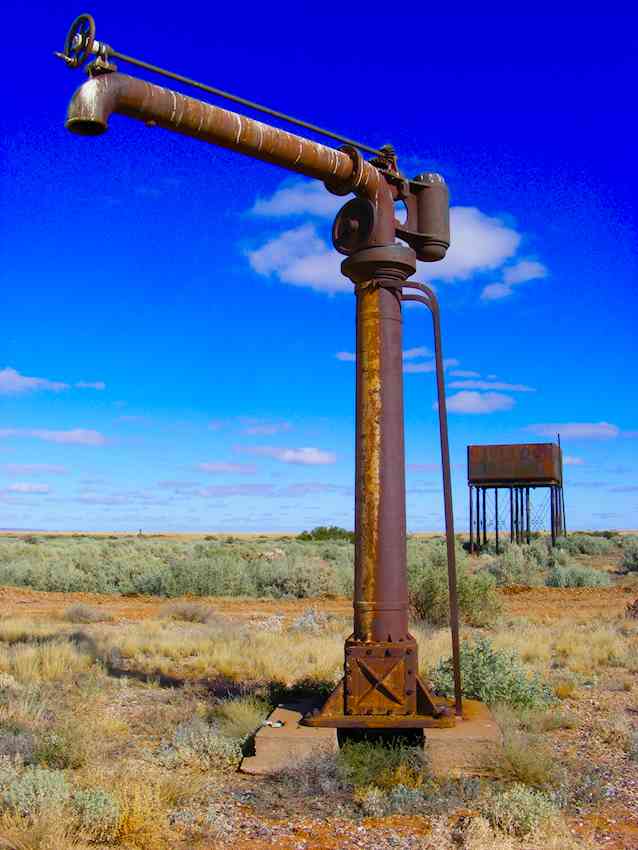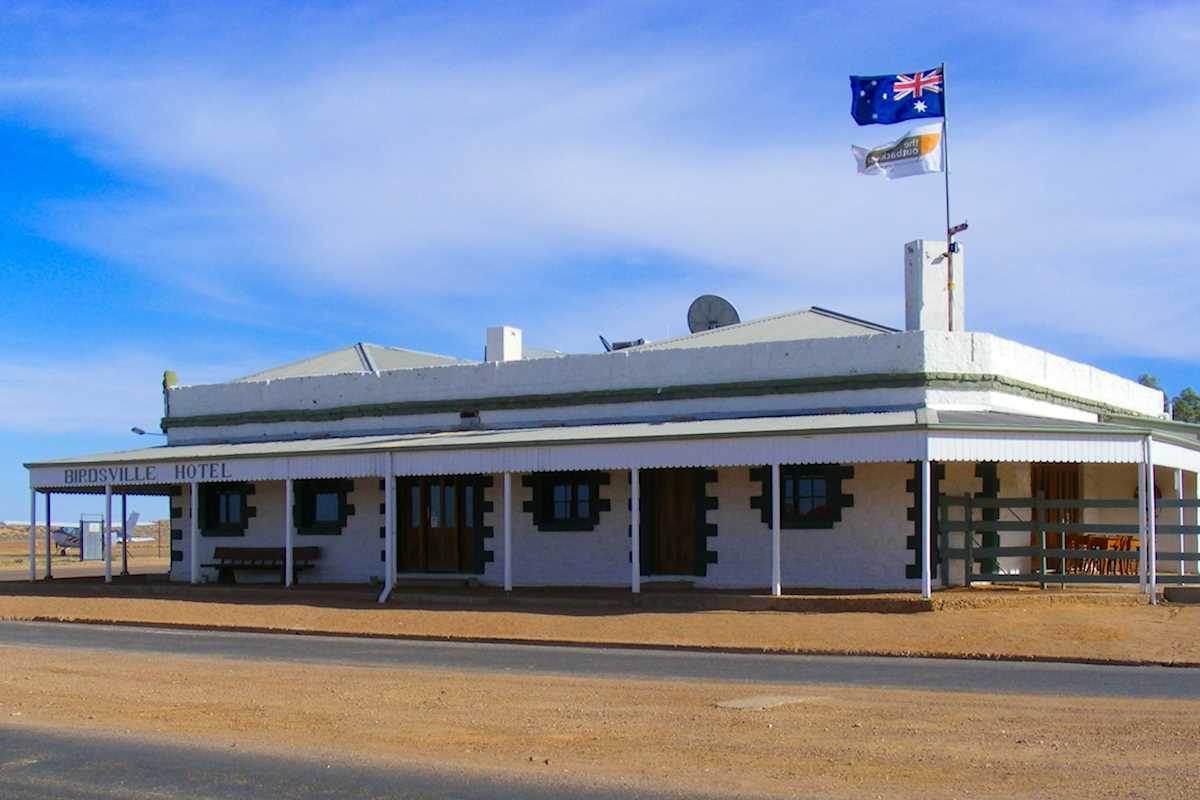Returning to the mainland from Kangaroo Island, I headed up towards McLaren Vale, the wine growing district just south of Adelaide. After enduring a couple of mornings with the temperature around zero, I decided it might be nice to head north to some sun and warmth.
I had a pleasant drive up through the Adelaide Hills and then on through the Barossa Valley, then stopping at Peterborough in the mid-north of SA.
Peterborough is an interesting place. Originally called Petersburg by German emigrants to the area, the name was changed during WWI due to anti-German sentiment stirred by the war.
The railway had come to the town around 1880 and because of its location, Peterborough became a major railway junction, employing around 1,000 men to handle over 100 train movements every day.

From the 1880s all the ore mined at Broken Hill passed through Peterborough, heading to port for shipping. Passengers travelling north to join the old Ghan railway passed through here from 1929; and the Transcontinental (an earlier version of the Indian Pacific), stopped at Peterborough from 1917.
At that time, different rail gauges were used and often different gauges were used within the same state. In SA alone for example, if you travelled on the old Ghan from Adelaide to Alice Springs you started on broad gauge (Adelaide to Terowie), changed to standard gauge (Terowie to Marree) and then travelled from Marree to Alice on narrow gauge. All passengers and all goods had to be transferred to a different train every time! Because of this, the Peterborough rail yards had to be able to handle trains for all gauges, so each set of tracks has three rails.
Peterborough is no longer the important rail town it used to be. The Ghan has moved on and the Indian Pacific still passes through but now only stops by request.
Steam Town is the museum developed from the old rail yards to preserve the rail heritage of the town. It is based around the old roundhouse, diesel shed and other old buildings featured.
The day tour takes about 1½ hours and gives you a walk around and into the steam and diesel engines and many of the carriages on display in the roundhouse. There are first and second class passenger carriages from the early 1900’s and it is very obvious that first class passengers definitely had it better than second class!

Also on display were various railway work carriages and specialty carriages like the baby health carriage (travelling to remote country areas, this carriage supported new mothers and ensured ongoing generations of rail enthusiasts).
The roundhouse, built in 1926, has 15 bays around the central turntable. The bays are now home to the steam and diesel engines and carriages on display.
The turntable currently carries a restored 1916 carriage converted to seat viewers of the impressive Sound and Light Show, presented nightly.
A large screen lowers in front of the roundhouse and the various engines located in the roundhouse behind the screen now form part of the light show. The movie is an entertaining and moving presentation about the history of the area. It was really well done (I am usually pretty critical of these sorts of presentations and although their digital projector has seen better days, it was still an enjoyable evening).
Farina
Located in the mid-north of SA this town started life as the evocatively titled ‘The Gums’, named after the red gums growing around the waterhole just north of town. The area was settled in the 1870’s during a period of exceptional rainfall and it was decided quite erroneously that the area would be suitable for growing wheat and barley.

The town name was changed to Farina, which is derived from the Latin word for flour, giving an indication of the optimism of this time.

But, this part of the state is actually arid and receives extremely variable rainfall. In the early 1880s the added complication of a massive drought brought ruin to many farmers.
Because all of the native vegetation had been removed for cropping and sheep grazing, winds kicked up massive sandstorms. These storms, sometimes lasting days, made life horrendous for the locals .

The railway arrived in 1878 and Farina became the rail terminus; for a while it was an important town. Goods left here by Afghan camel trains bound for Queensland and as far away as outback NSW. Goods and stock from those areas also came to Farina for shipping to markets in Adelaide and beyond.

Then the railway moved on and Farina became just another stop on the line.
The town managed to struggle on for a while but the post office closed in 1960 – there were not enough people in town to officially keep it open. Then the railway closed in 1980.
The last person left and Farina became a ghost town.

The remains of the town are mostly ruins now. It is an evocative reminder of the blind optimism of an earlier time.
Birdsville Track
The Birdsville Track is no longer a narrow two tyre tracks over sand dunes and gibber plains. The road now, while still dirt, is very wide and on this trip was in pretty good condition.
On the way I came across this rather pathetic looking dingo slinking down the track.

As I had already visited Birdsville previously, I did not stay long but was greeted by a massive and noisy thunderstorm. Fortunately there was little rain.
Birdsville is known for Sturt’s Desert Pea, which was flowing at this time.

Then I drove on to the outback town of Boulia. On the way I crossed the Tropic of Capricorn, so I was now officially in the tropics. I also crossed one creek with the fascinating name of “Motorcarbreakdown Creek”.
It rained again that night, so I stayed in Boulia for a couple of days, listening to the thunder and heavy rain on the roof of the camper.
Then it was on to Kynuna.
Where, I hear you ask?
Kynuna is probably one of the most famous places in Australia, in a very roundabout sort of way.
It is where the billabong is. You know – the billabong!!!

Banjo Patterson visited friends at Dagworth Station, located near Kynuna, in 1895. The station was owned by the Macpherson family and Patterson heard stories about the Great Shearer’s Strike of 1891 – 1894.
For a while during this strike, Australia hovered on the brink of civil war.
Gunfire was exchanged at Dagworth between strikers and troopers (police) and the shearing shed there was burnt down by the angry shearers. Sadly, 140 lambs were burnt to death in the fire. In an apparent act of remorse, the man who set fire to the shearing shed had shot himself dead. Patterson visited the station not long after the strike was over.
Now the next part of the story may or may not be absolute fact…
Whilst riding to the Combo waterhole for a picnic, Patterson and his friends supposedly discovered a sheep that had been killed for its meat – most likely by a passing swagman – and the remains left beside the track.
Then, according to Patterson in a later interview, that evening back at the station homestead Miss Macpherson played a little Scottish tune she knew from memory, on a zither (a stringed instrument also known as an auto-harp). Patterson, listening to her play, asked her if the tune had words.
She said she didn’t think so and Patterson replied that if not, he had some to go with it…
And “Waltzing Matilda” was born.
Combo Waterhole, near Kynuna, is the “Oh, there once was a swagman camped in the billabong, under the shade of a Coolabah tree”, billabong.
These are Patterson’s original 1895 lyrics. In 1903, the lyrics of the song were altered for an advertising jungle to sell Billy Tea and that is when the swagman became “jolly”…

Well, there is still water in the billabong and there are still Coolabah trees providing shade. And Dagworth Station is still there; the homestead Patterson visited was rebuilt and nothing of this original remains.
Interestingly, the Great Shearer’s Strike of 1891-1894 also contributed to the formation of the Australian Labour Party.
After Kynuna, I travelled up to Julia Creek then on to the Burke and Wills Roadhouse for a welcome refresher in beer and food.
Leaving the roadhouse, it was an easy morning’s drive to Karumba, on the Gulf of Carpentaria.

